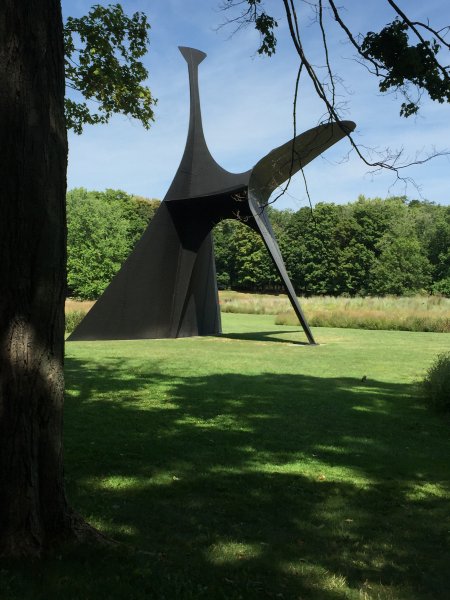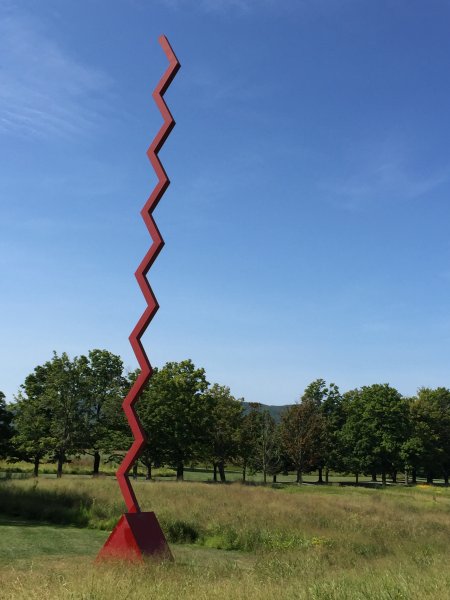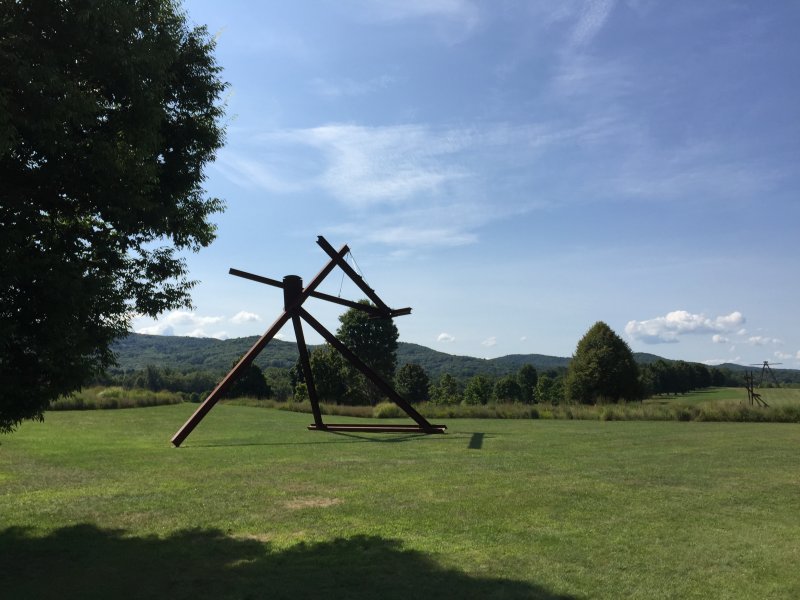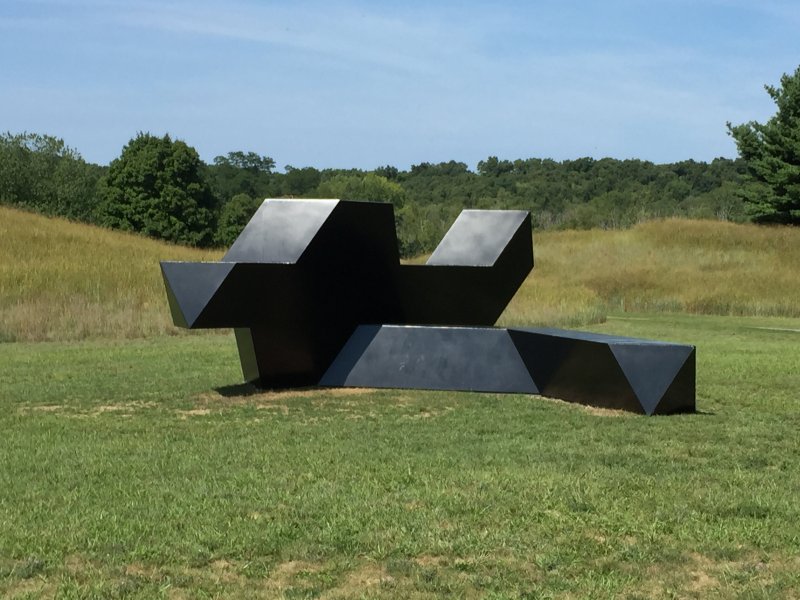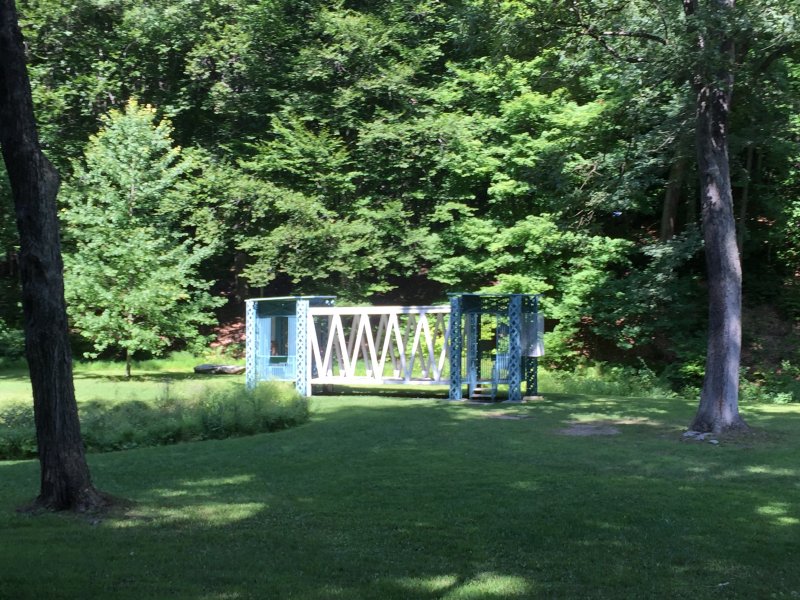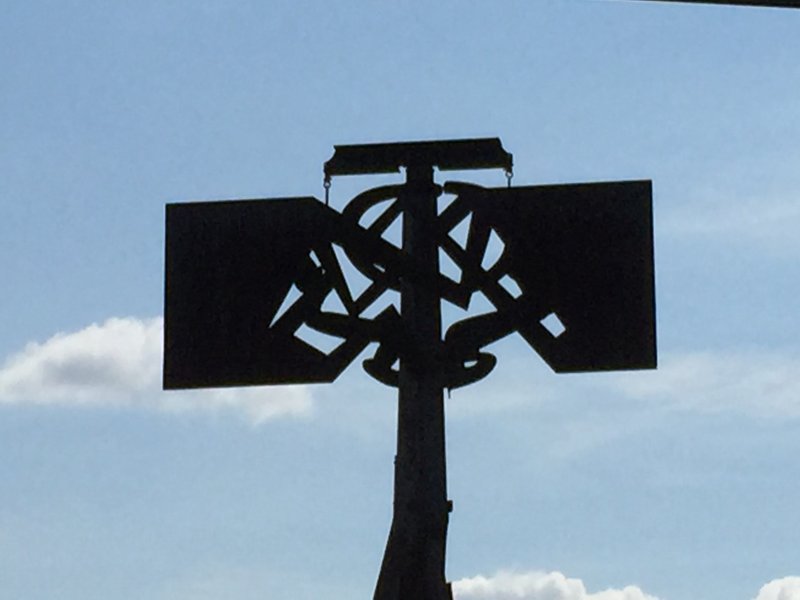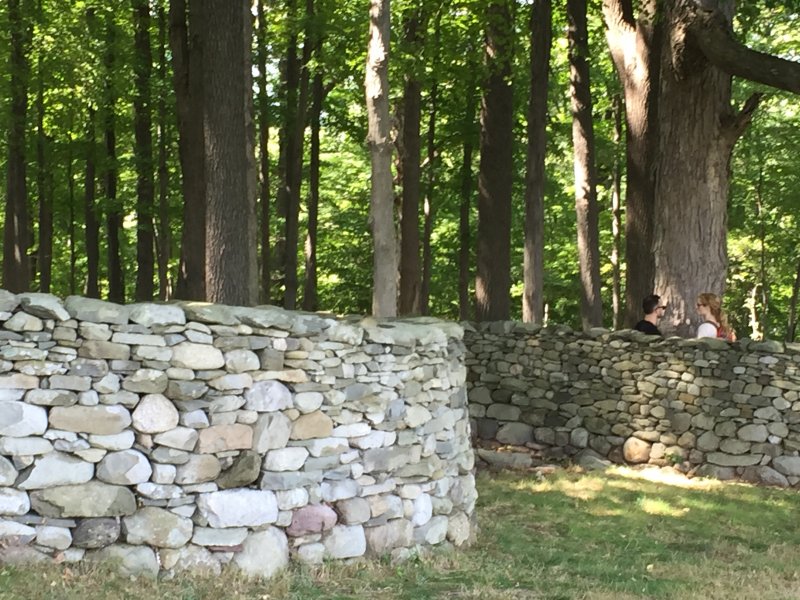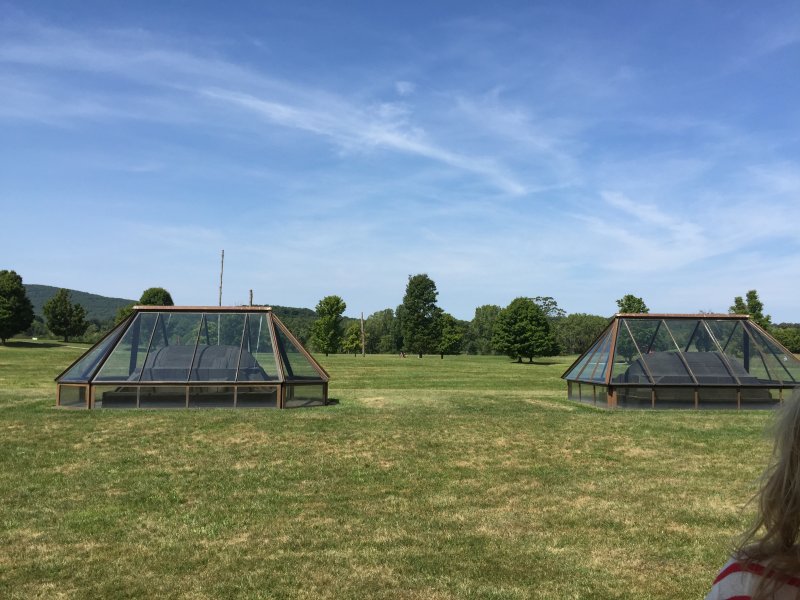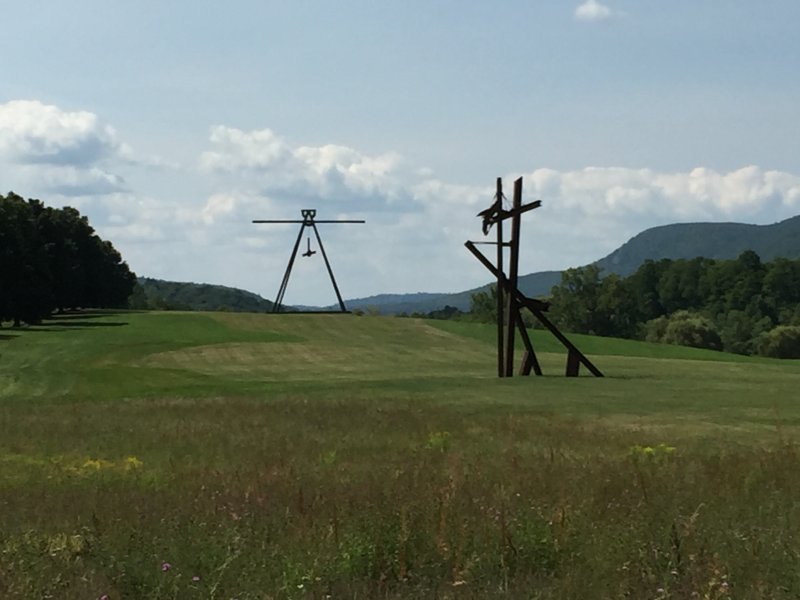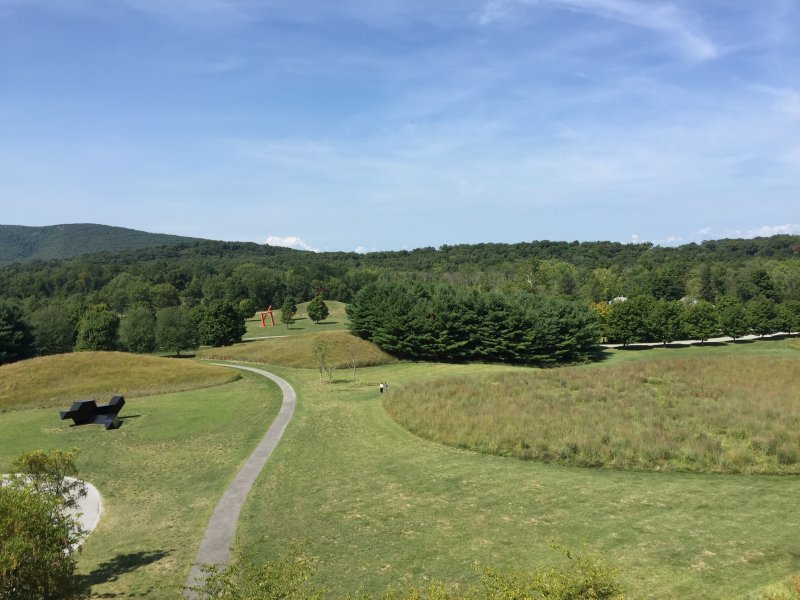
The whole show was comprised of a porch rocker and inside, three recliners in front of tv monitors playing a video of the other museums’ exhibits of the Deadly Sins. This exhibit was deadly! Come on, curators! Just because the exhibit was on sloth didn’t mean they had to be lazy. What a delicious art historical topic and certainly one for contemporary artists. A real missed opportunity.
Fortunately, I had already had a wonderful visit to the Storm King Art Center, a place that requires the opposite of sloth. More than 100 sculptures dot the landscape, over 500 acres of picturesque, upstate New York countryside. Past visits had me tromping all over the place.
Today, despite the picture-perfect weather, I slothed out. I took the tram all over the site. No, I didn’t see as much as slowly as I would have liked, but my real objective was to get to the Lynda Benglis Water Sources sculptures. Benglis has always been interested in texture and expressionistic, organic shapes, so she makes a wonderful fit as the featured artist in an environment where the sculptures play off of, complement, intrude, and create landscapes, as you can see in this slide show.
Most of the Benglis outdoor pieces are bronze and were not created site specifically for Storm King. Some elements were added to North South East West for the site. Regardless, all I could see was Bernini, especially in relationship to those columns.

Bernini, Fountain of the Four Rivers, 17th Century, Rome
See what I mean? That same earthy, crusty, twisting, Baroque sensibility. I’d love to ask Benglis if she thinks of Bernini, tooi.
You can see how her works fit in the landscape. All those verticals reaching to the sky.
Sound is an important element for the works, so enjoy a listen in these videos.
Crescendo actually reminds me of the natural history museum. A primordial ooze emerging out of the water becoming a dinosaur. Do you see it, too?
Like most sculpture, you get different impressions by walking around any of these works.
This last video of Pink Ladies shows that Benglis is experimenting with materials. In addition to bronze, she uses polyurethane that she also casts and then pigments. The poly allows the pink to shimmer in the sun. It becomes translucent, too. Mesmerizing and meditative.
With these works, and the lovely day, I enjoyed a bit of slothfulness.
As a culture, are we slothful? Inside Storm King’s museum was a small exhibition of the emerging artist the museum has supported–Luke Stettner. His still untitled work demonstrates how archaeologists may look back at us: ‘Hmmm. This garbage suggests that back in the day, people valued these gizmos for a moment, before discarding them for the next thing.’
A definite case for recycling!


